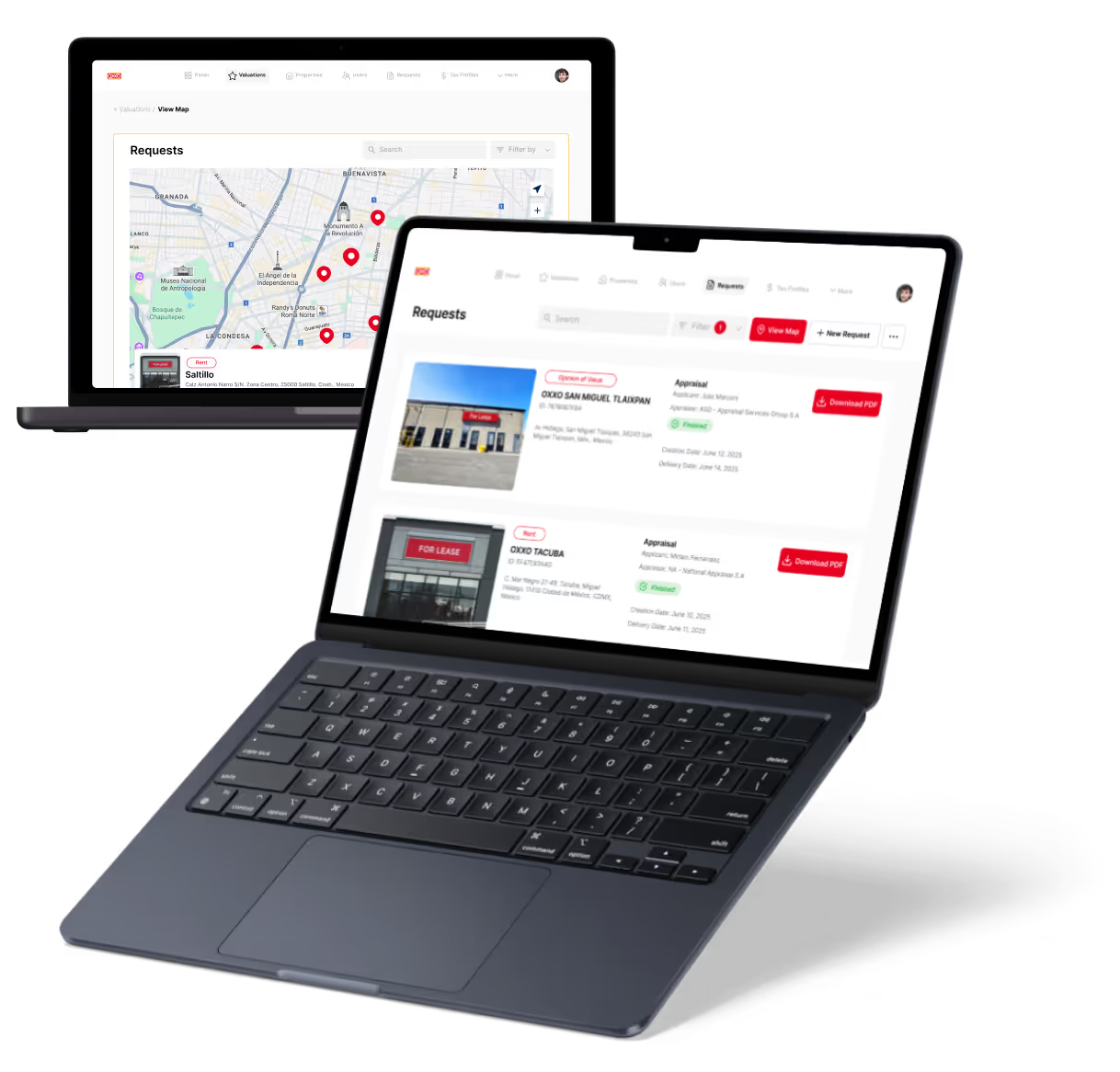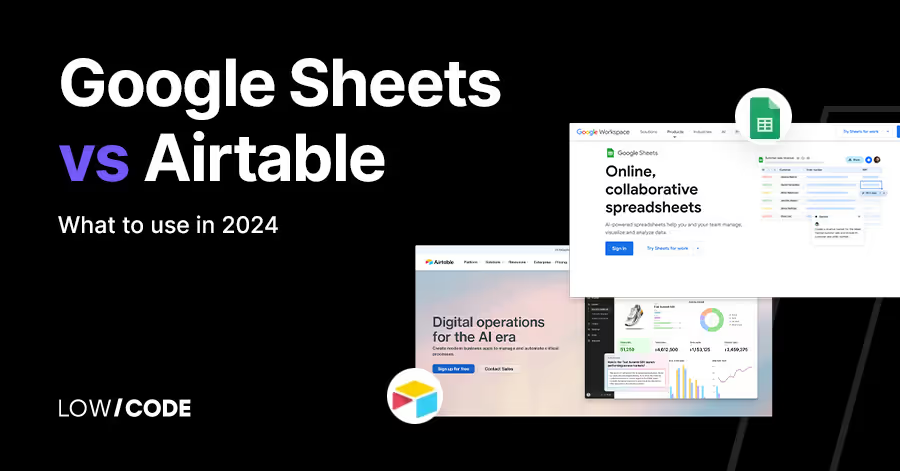Airtable vs Jira | 10 Factors to Decide the Best One
10 min
read
Compare Airtable vs Jira for project tracking, team workflows, automation, and dev tasks. Learn which tool fits your business or dev team better

Airtable and Jira are both leading tools for managing work, but they cater to different types of teams.
Airtable is a visual, spreadsheet-like platform used by over 300,000 organizations for flexible project tracking, content planning, and operations. Jira, used by over 65,000 companies, is designed for developers managing sprints, bugs, and code releases.
If your team needs structure and automation for software tasks, Jira is a powerful choice. If you want to organize creative or business workflows without coding, Airtable is easier and more flexible.
This guide compares their features, such as task tracking, integrations, scalability, and team collaboration, so you can choose the one that best fits your workflow.
Quick Comparison Table - Airtable vs Jira
1. What’s the core difference between Airtable vs Jira?
The core difference between Airtable and Jira is how they handle work and who they’re built for.
Airtable is a flexible, spreadsheet-style tool that works like a lightweight database. It’s great for tracking tasks, content, or projects with custom views like Kanban, calendar, or gallery. You can build workflows and organize almost anything visually.
Jira, by contrast, is built for software development and agile teams. It focuses on sprints, issues, and bug tracking. It supports detailed task flows, team roles, and reporting for tech teams.
Use Airtable if you want a customizable tool that works across different teams like marketing, operations, or content. Choose Jira if you run a development team that needs issue tracking, backlog planning, and sprint boards. Both are powerful, but their use cases and structure are very different.
2. Task and workflow management
Let’s begin with how each tool helps teams manage work and tasks.
Can Airtable manage team projects visually?
Yes. Airtable is great for visual project tracking. It offers flexible views like grid, Kanban, calendar, and timeline. You can organize tasks using filters, tags, and color-coded fields. Each project is like a smart spreadsheet, making it easy to group tasks, assign owners, and track progress.
Teams can customize their boards however they want—without code. It’s perfect for content planning, event tracking, or marketing workflows. Airtable works across departments, not just for tech teams. Its simplicity makes it easy for anyone to build a project tracker that fits their style and goals.
Is Jira better for sprint planning and issue tracking?
Yes. Jira is designed for sprint-based work and bug tracking. It offers backlog views, agile boards, issue types, and epics. Teams can plan sprints, assign tickets, and track progress through workflow stages like "to do," "in progress," and "done." Developers love its focus on details like story points, estimates, and release tracking. It also supports advanced workflows and approval steps. If you're running a software team or doing product development, Jira is one of the best tools to keep everything organized using Agile or Scrum frameworks. You can even use a Jira epic template example to structure large projects and break them down into smaller, manageable tasks.
3. Data structure and customization
Now let’s compare how flexible each platform is when it comes to structuring your data.
How flexible is Airtable’s database and field setup?
Airtable is like a spreadsheet with superpowers. You can create custom fields for anything—text, numbers, dates, dropdowns, checkboxes, links, or attachments. You can also link records across tables, just like a relational database. This makes it easy to create connected data sets, like tasks linked to clients or campaigns.
Views are customizable, and you can sort, filter, and group tasks in many ways. Airtable also allows formula fields and rollups for calculations. It’s highly flexible for building workflows around projects, operations, or creative tasks—all without needing code.
Does Jira support flexible task and data customization?
Yes, but it’s focused more on software project fields. Jira allows custom issue types, fields, and workflows. You can create tasks, stories, bugs, and link them to epics or releases. You can add custom fields like priority, estimates, or environment. It also supports conditional workflows and validation rules.
However, customization is more structured and sometimes requires admin access. It’s great for development teams who need detailed task tracking with technical data. For non-tech use cases, it may feel too rigid compared to Airtable’s free-form field setup.
4. Collaboration and team communication
Let’s explore how both tools support team communication and real-time work.
How does Airtable support team-based workflows?
Airtable supports real-time collaboration. Team members can comment on rows (called records), tag teammates, and work together on shared views. You can control who edits what using permission levels. Changes happen instantly, and every edit is tracked in the history.
You can also set up shared dashboards or linked tables across teams. Airtable integrates with Slack, so teams get updates in real time. It’s great for cross-functional teams working on campaigns, content calendars, or customer pipelines. The visual layout also helps everyone stay on the same page.
Is Jira good for communication in dev teams?
Yes. Jira is built for software teams that need to manage detailed workflows and updates. You can assign issues, comment directly on tickets, mention teammates, and see activity logs. Jira also connects with Slack, Microsoft Teams, and Confluence for documentation.
Notifications keep everyone updated about issue changes, sprint progress, or blockers. Jira helps dev teams stay focused and aligned through clear stages like backlog, sprint, testing, and done. While it works best for technical teams, non-devs might find its interface and terminology less intuitive.
Read more about:
5. Automations and workflow extensions
Now let’s look at how both tools help automate repeated tasks and workflows.
What automation options does Airtable support?
Airtable includes a built-in automation tool. You can trigger actions when a record is updated, created, or matched by a condition. For example, you can send a Slack message, update a field, or send an email automatically. Airtable also connects with Zapier, Make, and other automation platforms to expand your workflow.
You can schedule reminders, sync with Google Calendar, or even update data across multiple bases. This makes Airtable powerful for operations, marketing, or admin teams who need to cut down manual work without writing code.
How powerful are Jira’s built-in automation tools?
Jira has advanced automation features for managing software workflows. You can automate issue transitions, field updates, and notifications based on triggers like status changes, due dates, or commits. It also supports custom rules, conditions, and branching logic. Jira’s automation builder is visual and supports complex if-then workflows.
It’s ideal for Agile teams who need to reduce busywork during sprints or releases. You can also integrate with GitHub, Bitbucket, and deployment tools for deeper control. It’s one of Jira’s strongest features for engineering teams.
6. Learning curve and ease of use
Let’s compare how easy it is to start using each tool.
Is Airtable easy to use for beginners?
Yes. Airtable is one of the easiest project tools to learn. If you’ve used a spreadsheet like Excel or Google Sheets, you’ll feel at home. The interface is clean, and you can switch between views like Kanban, calendar, or timeline without setup. Airtable also includes templates to help you start quickly.
Most features are drag-and-drop, and no coding is required. Even with powerful functions like automations and formulas, it stays beginner-friendly. It’s perfect for startups, marketing teams, or anyone looking for a flexible tool without complexity.
How complex is Jira for new users or non-developers?
Jira has a steeper learning curve. It’s built for developers and technical teams, so new users may find the interface confusing. There are many views, statuses, issue types, and fields to learn. If you’re not used to agile frameworks like sprints or epics, it can feel overwhelming.
However, Jira offers guided setups and templates to help new teams get started. With training or practice, non-developers can still use it well. But for simple task management or non-tech workflows, Jira might be more than what’s needed.
Read more about:
7. Scalability and large-team use
Now let’s see which platform handles growth and complexity better.
Can Airtable scale for growing project needs?
Yes, Airtable can scale well for most small and mid-size teams. You can create large workspaces, link tables across projects, and control access at the view level. However, there are limitations on how many rows or automations you can use, depending on your plan.
It works well for cross-team coordination, content workflows, and databases with moderate size. For very large datasets, you may need advanced setups or syncs. It’s great for scaling startups, but may not match Jira’s enterprise depth for software teams.
Is Jira better suited for enterprise or multi-team workflows?
Yes. Jira is built for scale. It supports thousands of users across different departments, projects, and products. You can create permission schemes, workflow templates, and role-based access for different teams. It also connects with tools like Jira Service Management or Confluence to create a full enterprise suite.
With robust reporting, security, and integrations, Jira is ideal for companies that follow Agile, DevOps, or ITIL workflows. If you're managing large teams, product releases, or detailed development lifecycles, Jira is a better long-term fit.
Read more about:
8. Content and visual project management
Now let’s compare how each tool fits creative and non-tech workflows.
Can Airtable handle content planning and marketing workflows?
Yes. Airtable is widely used for marketing, editorial calendars, social media planning, and campaign tracking. Its visual views—like calendar, Kanban, and gallery—make it ideal for planning and tracking creative work. You can attach files, link records, and collaborate with content creators or designers in real-time.
Airtable also allows tagging, approvals, and content statuses, so marketing teams stay organized. With templates for content planning, Airtable helps non-tech teams manage projects without needing extra tools. It’s flexible enough for agencies, content creators, and internal teams alike.
Is Jira a good fit for creative and non-tech projects?
Not really. While Jira can technically be used for any workflow, it’s mainly built for software development and engineering. The interface and setup focus on issues, backlogs, sprints, and user stories. For non-tech users, this can be confusing and overkill.
Creative teams often find Jira too rigid for visual content planning or marketing. While Jira templates exist for non-tech work, tools like Airtable offer more freedom, easier setup, and better visual layouts. Jira is better suited for structured, repeatable development processes.
9. Integrations and developer ecosystem
Now let’s look at how each tool fits into your tech stack.
What tools does Airtable integrate with for business teams?
Airtable integrates well with popular business tools like Slack, Google Workspace, Outlook, Zapier, Make, and more. You can also use Airtable’s API for custom connections. Many teams sync Airtable with tools like Notion, Typeform, or HubSpot to manage projects, leads, or content.
While it’s not a developer-first platform, Airtable still supports technical workflows through automation platforms and webhooks. It’s ideal for cross-functional teams who want flexible connections without heavy setup or coding knowledge. Airtable also offers extensions and widgets for extra features inside each base.
How well does Jira connect with dev tools and CI/CD systems?
Jira is deeply connected with the developer ecosystem. It integrates with GitHub, GitLab, Bitbucket, Jenkins, and other CI/CD tools. You can track code commits, deployments, and test results directly inside Jira tickets. It also supports integration with Confluence for docs, Trello for task boards, and Opsgenie for incident alerts.
Jira’s API is very robust, and its marketplace offers thousands of developer-focused plugins. For engineering, DevOps, and product teams that rely on version control and release pipelines, Jira is one of the best-connected tools available.
Read more about:
10. Final verdict – Airtable or Jira?
When to choose Airtable over Jira
Choose Airtable if your team needs a simple, visual, and flexible tool to manage tasks, content, or operations. It’s great for marketing, HR, editorial, event planning, and internal tracking. You can customize everything from fields to views, without code.
Airtable is easier for non-technical users and works well across teams. You can set up automation, link records, and use templates to get started quickly. It’s ideal for teams that don’t follow strict software development practices but still want structure and collaboration.
When to choose Jira over Airtable
Choose Jira if you manage software projects, bug tracking, sprint planning, or product development. It’s perfect for Agile teams that need advanced issue tracking, workflows, and dev tool integration. Jira’s strength is in detail, reporting, and structure.
It supports large teams with permission control, automation, and release tracking. If your team works in sprints, handles backlogs, or needs to log code updates alongside tasks, Jira is the better choice. It’s not made for creative or general task management—but it’s the go-to for developers.
Created on
July 3, 2025
. Last updated on
October 28, 2025
.

FAQs
Can Airtable replace Jira for task tracking?
Is Jira too complex for small teams?
Can you use Airtable and Jira together?
Does Airtable support sprints and dev features?
Which tool is better for marketing teams?
Is Jira free to use?







%20(Custom).avif)








